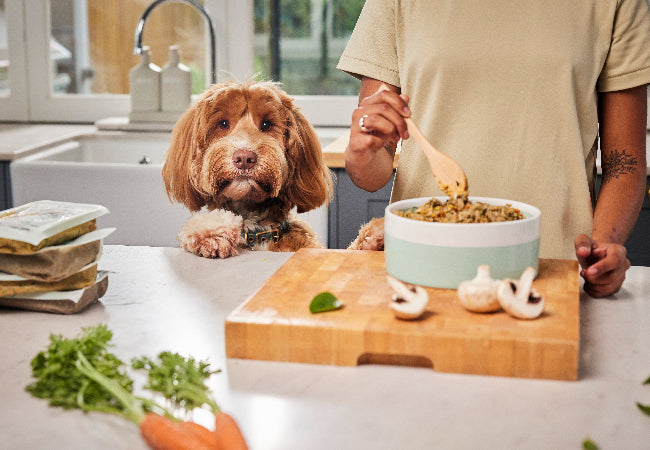Natural Diets for Dogs 2025: Vet’s Guide to Raw, Cooked & Balanced Feeding 🐶✨

In this article
Natural Diets for Dogs 2025: Vet’s Guide to Raw, Cooked & Balanced Feeding 🐶✨
By Dr. Duncan Houston BVSc
Feeding your dog naturally doesn’t mean choosing extremes. As a vet, I believe in balanced, safe, and flexible nutrition—whether it’s raw, cooked, kibble, or a mix.
I’m Dr. Duncan Houston, veterinarian and founder of Ask A Vet. Here’s my practical approach to natural dog food that supports health, safety, and real life (yes, including treats from the table).
🌱 What Is a “Natural Diet” for Dogs?
- Minimally processed, whole-food ingredients
- Often includes raw or lightly cooked meats, vegetables, and healthy fats
- Avoids artificial preservatives, fillers, and heavy carbohydrate loads
Natural doesn’t have to mean raw. Cooked diets—especially gently prepared at home—can be just as beneficial.
✅ Dr. Houston’s 5 Feeding Principles
- Balance over time, not in every bowl.
- Whole foods first, but smart supplements when needed.
- Growth-stage pets need strict balance—adults have more flexibility.
- Pregnancy and lactation = nutritional priority zone.
- Treats happen. Plan with that in mind, not guilt.
🍳 Cooked vs Raw – What I Recommend
Cooked Diets
- Gentle cooking retains nutrients and reduces bacterial risk
- Great for home feeders—easier to digest and safer for households with kids
- Still needs vitamin/mineral support if fed long term
Raw Diets
- Only if commercially prepared and tested
- DIY raw poses risks unless formulated by a vet nutritionist
- Never feed raw to puppies, pregnant dogs, or immunocompromised households
🐾 Feeding Puppies & Pregnant Dogs
- Growing dogs and lactating mothers need precisely balanced nutrition
- I recommend feeding a complete and balanced growth-stage or performance food
- Supplements alone can’t fix poor base nutrition at this stage
🥩 My Natural Diet Formula for Adult Dogs
Co-feeding gives flexibility, enrichment, and nutritional diversity:
- ✔ 50–80% complete commercial food (raw, cooked, or premium kibble)
- ✔ 20–50% home-cooked additions: lean meats, organ meats, eggs, sardines, veggies
- ✔ Treats and chews (ideally real foods, not ultra-processed)
This style of feeding allows variation, enjoyment, and health—without obsessing over perfection.
🛡️ What to Watch Out For
- Home diets that lack calcium, zinc, vitamin E, or omega-3s
- Overfeeding liver or bone without balance
- Excess fat from table scraps causing pancreatitis
🧠 Pro Tip: Monitor Stool and Energy
- Well-fed dogs should have small, firm stools and steady energy
- Loose stool, flaky skin, or lethargy? Time to review the balance
🔗 Tools from Ask A Vet
- Ask A Vet – Upload your dog’s current meals and get a vet-approved co-feeding plan
📋 Summary Excerpt
A natural diet can include raw or cooked food, kibble, and homemade additions—as long as it’s safe and nutritionally sound. A vet explains how to feed your dog naturally, realistically, and responsibly.
❓ FAQs
-
Q: Is it okay to mix kibble and fresh food?
A: Absolutely. Co-feeding is one of the best ways to boost nutrition without imbalance. -
Q: Do adult dogs need “balanced” food every day?
A: Not every day. As long as nutrition is balanced over time, adult dogs can thrive on variety. -
Q: What’s better: cooked or raw?
A: Both can work—cooked is safer for home prep, raw is fine when commercial and complete. Avoid homemade raw unless formulated by a vet nutritionist.






